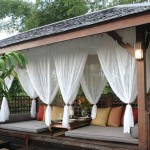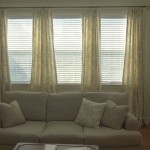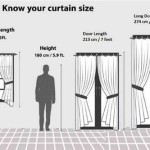Sun Blocking Curtains for Sliding Glass Doors: A Comprehensive Guide
Sliding glass doors offer numerous benefits, including enhanced natural light and seamless access to outdoor spaces. However, they also present challenges in managing sunlight, heat gain, and privacy. Excessive sunlight can lead to faded furniture, increased energy bills due to air conditioning demands, and uncomfortable glare. Sun blocking curtains for sliding glass doors provide a practical solution to these issues, offering a versatile and aesthetically pleasing way to control the indoor environment.
Selecting the appropriate sun blocking curtains requires careful consideration of various factors, including material type, opacity, color, and installation method. The objective is to find a solution that effectively mitigates sunlight while complementing the existing décor and meeting specific functional requirements.
Understanding the Need for Sun Blocking Curtains
Before delving into the selection process, it is crucial to understand why sun blocking curtains are a valuable addition to any home with sliding glass doors. The following points highlight the key benefits they offer:
Heat Reduction: Sliding glass doors can act as significant entry points for solar heat, especially during peak daylight hours. This influx of heat can substantially increase the temperature inside the home, forcing the air conditioning system to work harder and resulting in higher energy consumption. Sun blocking curtains, particularly those with a reflective backing, can effectively minimize heat gain by reflecting a significant portion of the sun's rays back outside. This leads to a cooler and more comfortable indoor environment, potentially reducing energy bills.
Glare Reduction: Intense sunlight streaming through sliding glass doors can create a distracting and uncomfortable glare on surfaces like televisions, computer screens, and even furniture. This glare can hinder productivity, make it difficult to enjoy entertainment, and cause eye strain. Sun blocking curtains diffuse and soften the sunlight, minimizing glare and creating a more visually comfortable interior space.
Protection from UV Rays: Prolonged exposure to ultraviolet (UV) rays can cause fading and damage to furniture, carpets, and other interior furnishings. UV rays can break down the dyes and fibers in these materials, leading to discoloration and deterioration over time. Sun blocking curtains act as a barrier against UV rays, protecting valuable belongings from the damaging effects of sunlight.
Privacy Enhancement: While sliding glass doors provide a clear view of the outdoors, they can also compromise privacy, especially in densely populated areas or homes with close proximity to neighbors. Sun blocking curtains offer a simple and effective way to increase privacy, allowing residents to enjoy their living spaces without feeling exposed to prying eyes. During the day, sheer or semi-opaque sun blocking curtains can allow filtered light to enter while still maintaining a degree of privacy. At night, thicker, more opaque options can completely block the view from outside.
Improved Sleep Quality: For bedrooms with sliding glass doors, sun blocking curtains are essential for creating a dark and restful sleep environment. Exposure to light, even through closed eyelids, can disrupt the body's natural sleep-wake cycle and interfere with the production of melatonin, a hormone that regulates sleep. Sun blocking curtains completely block out sunlight, promoting deeper and more restorative sleep.
Key Considerations When Choosing Sun Blocking Curtains
Selecting the right sun blocking curtains involves careful consideration of several factors. These factors include material, opacity, color, and the overall aesthetic of the room. Understanding these aspects will help in making an informed decision that meets both functional and design requirements.
Material Type: The material of the curtains plays a crucial role in their sun blocking capabilities. Several materials are commonly used for sun blocking curtains, each offering varying degrees of light control and insulation. Blackout fabrics are specifically designed to block out almost all sunlight, making them ideal for bedrooms or home theaters. These fabrics typically have a dense weave and may include a special coating or lining to enhance their light-blocking properties. Polyester is a durable and affordable option that can be treated with coatings to achieve sun blocking properties. It is also resistant to wrinkles and fading. Cotton, while a natural fiber, can be effective at blocking sunlight when woven tightly and lined with a blackout fabric. Linen, similar to cotton, requires lining for optimal sun blocking. The choice of material will significantly influence the curtain's performance, durability, and overall appearance.
Opacity Level: Opacity refers to the amount of light that a fabric allows to pass through. Sun blocking curtains are generally available in varying levels of opacity, ranging from sheer to blackout. Sheer curtains allow a significant amount of light to filter through, providing a soft and diffused glow while still offering some degree of privacy. Semi-sheer curtains offer a balance between light filtering and privacy, allowing some light to enter while obscuring the view from outside. Room darkening curtains block out a significant portion of sunlight, creating a dimmer and more subdued atmosphere. Blackout curtains, as mentioned earlier, provide the highest level of light blockage, effectively creating a dark and private space. The optimal opacity level depends on the specific needs and preferences of the homeowner, as well as the intended use of the room.
Color Selection: The color of the curtains also impacts their sun blocking performance. Darker colors tend to absorb more light and heat, while lighter colors reflect more light. For optimal sun blocking, consider choosing curtains in darker shades, such as navy blue, charcoal gray, or deep brown. However, it is important to note that darker colors may also fade more quickly in direct sunlight. If choosing lighter colors, look for fabrics with a reflective backing or lining to enhance their sun blocking capabilities. The color of the curtains should also complement the existing décor and create a cohesive and visually appealing look.
Lining Options: Adding a lining to curtains can significantly enhance their sun blocking properties. Blackout linings are specifically designed to block out almost all sunlight, making them an excellent choice for achieving a completely dark room. Thermal linings provide insulation, helping to regulate the temperature inside the home and reduce energy costs. Interlinings, which are typically made of a thicker fabric like flannel or felt, add extra weight and body to the curtains, improving their drape and sound absorption. The choice of lining depends on the specific needs and desired performance of the curtains.
Installation Method: The installation method of the curtains can also affect their sun blocking effectiveness. Curtains that are hung close to the wall, with minimal gaps around the edges, will provide better light blockage than curtains that are hung further away. Using a wraparound curtain rod can help to minimize light leakage around the sides of the curtains. Additionally, consider using tiebacks or valances to further control the amount of light entering the room. Proper installation is essential to maximizing the sun blocking benefits of the curtains.
Types of Sun Blocking Curtains for Sliding Glass Doors
Several types of curtains are well-suited for sliding glass doors, each offering unique features and benefits. Understanding these options will assist in selecting the most appropriate style for the specific needs and aesthetic preferences.
Panel Curtains: Panel curtains are a classic and versatile choice for sliding glass doors. They consist of individual panels that hang from a rod or track. Panel curtains are available in a wide range of materials, colors, and patterns, making them easy to coordinate with existing décor. They can be easily opened and closed to control the amount of light entering the room. For optimal sun blocking, choose panels made from blackout fabric or lined with a blackout material. The length of the panels should be sufficient to cover the entire sliding glass door, with a slight overlap to minimize light leakage.
Vertical Blinds: Vertical blinds offer a sleek and modern look that is well-suited for sliding glass doors. They consist of vertical slats that can be rotated to control the amount of light entering the room. Vertical blinds are available in a variety of materials, including fabric, vinyl, and wood. Fabric vertical blinds can be treated with coatings to enhance their sun blocking properties. Vinyl vertical blinds are durable and easy to clean, making them a practical choice for high-traffic areas. Wood vertical blinds add a touch of elegance and sophistication. When choosing vertical blinds for sun blocking, look for options with tightly overlapping slats and a minimal gap between the blinds and the wall.
Sliding Panel Tracks: Sliding panel tracks consist of wide fabric panels that slide horizontally along a track. This type of curtain is particularly well-suited for large sliding glass doors or patio doors. Sliding panel tracks offer a clean and contemporary look, and they can be easily customized to fit the specific dimensions of the door. For optimal sun blocking, choose panels made from blackout fabric or lined with a blackout material. The panels should overlap slightly to prevent light leakage. Sliding panel tracks can be opened and closed manually or with a motorized system.
Roman Shades: Roman shades are a stylish and functional option for sliding glass doors. They consist of fabric panels that fold up neatly when raised and cascade down in elegant folds when lowered. Roman shades are available in a variety of fabrics, colors, and patterns. For sun blocking, choose Roman shades made from blackout fabric or lined with a blackout material. Roman shades can be installed inside or outside the window frame. Inside-mounted Roman shades provide a cleaner look, while outside-mounted Roman shades offer better light blockage.
Cellular Shades: Cellular shades, also known as honeycomb shades, are a energy-efficient option for sliding glass doors. They consist of a series of honeycomb-shaped cells that trap air, providing insulation and helping to regulate the temperature inside the home. Cellular shades are available in a variety of fabrics and colors, and they can be customized with blackout liners for optimal sun blocking. Cellular shades can be operated manually or with a motorized system. They are a versatile and practical choice for controlling light, heat, and privacy.

Sun Zero Conrad Extra Wide Blackout Sliding Patio Door Curtain Panel Wal Com

Sun Zero Navy Thermal Extra Wide Blackout Curtain 100 In W X 84 L 43347 The Home

Deconovo Blackout Curtains For Sliding Glass Door Thermal Insulated Grommet Window 52 X 108 Gray Set Of 2 Wal Com

Outdoor Curtains Waterproof Sun Blocking Heavy Duty Vertical Blind Grommet Shades For Garage Patio Door Window Porch Pergola W 100 Inches X L 84 Gray 1 Panel Wal Com

Blackout Thermal Patio Door Curtain Panel Only Belk

Double Layer Grommet Blackout Curtains For Sliding Glass Door 2 Panels Kgorge

Suns Arlie 100 W X 84 L Energy Saving Blackout Grommet Top Patio Door Curtain Jcpenney

Deconovo Blackout Curtains For Sliding Glass Door Thermal Insulated Grommet Window 52 X 108 Gray Set Of 2 Wal Com

Pin On Window Treatment Options

Pro Space Extra Wide Outdoor Curtains Blackout Curtain Panel Solid Heavy Duty Sliding Door Drape 100 In W X 96 L Ewoucg10096b The Home








